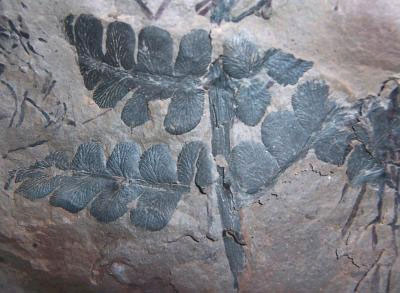Researchers find Earth’s first rainforest
Researchers find Earth’s first rainforest
University of Bristol
April 23, 2007
A spectacular fossilised forest has transformed our understanding of the ecology of the Earth’s first rainforests. It is 300 million years old.
The forest is composed of a bizarre mixture of extinct plants: abundant club mosses, more than 40 metres high, towering over a sub-canopy of tree ferns, intermixed with shrubs and tree-sized horsetails. Nowhere elsewhere on the planet is it possible to (literally) walk through such an extensive swathe of Carboniferous rainforest.
It was discovered by Dr Howard Falcon-Lang from the University of Bristol, UK, and US colleagues, in the underground workings of a coalmine, in Illinois, USA. The results of this work are published online today in Geology, by the Geological Society of America.
The fossilized forest was preserved following a major earthquake 300 million years ago. The quake caused the whole region to drop below sea level whereupon the forest became buried in mud, preserving it forever.

Detail of a pteridosperm, an extinct seed-producing fern-like plant. Width across image about six centimeters. Credit: Dr. Howard Falcon-Lang |
Dr Howard Falcon-Lang said: “It was an amazing experience. We drove down the mine in an armoured vehicle, until we were a hundred metres below the surface. The fossil forest was rooted on top of the coal seam, so where the coal had been mined away the fossilized forest was visible in the ceiling of the mine.
“We walked for miles and miles along pitch-black passages with the fossil forest just above our heads. We were able to make a map of the forest by the light of our miner’s lamps.”
The fossil forest is the largest ever found, covering over 10,000 hectares, an area 10 km by 10 km (which would cover the city of Bristol, UK). The fossils preserve a unique snapshot of what tropical rainforests were like 300 million year ago.
Dr Falcon-Lang added: “As there is nothing like it around today, before our work we knew very little about the ecological preferences and community structure of these ancient plants. This spectacular discovery allows us to track how the species make-up of the forest changed across the landscape, and how that species make-up is effected by subtle differences in the local environment.”
The study reconstructs a Carboniferous rainforest at the largest spatial scale ever attempted. The fossils show that the Earth’s first rainforests were highly diverse and that the kinds of tree species changed across the ancient landscape. The forest dates from the Carboniferous period, 300 million years ago, when most of the world’s coal resources were formed.
This is a modified news release from the University of Bristol.
CITATION: William A. DiMichele, Howard J. Falcon-Lang, W. John Nelson, Scott D. Elrick and Philip R. Ames (2007). Ecological gradients within a Pennsylvanian mire forest. Geology, May 2007; v. 35; no. 5; p. 415—418; doi: 10.1130/G23472A